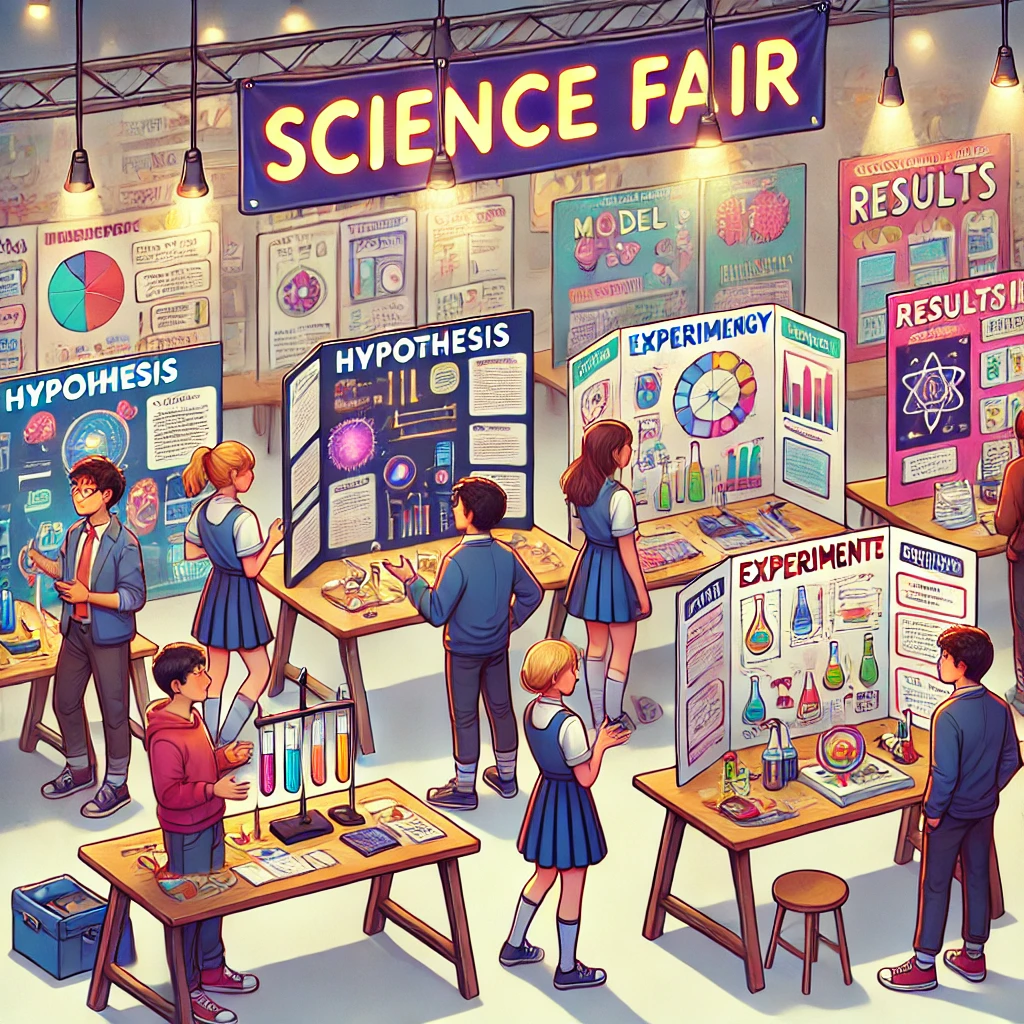What kind of projects are acceptable ?
The purpose of our Science Fair is to encourage innovation, problem-solving, and critical thinking. Projects should focus on the scientific method and aim to address real-world problems through research, experimentation, and data analysis.
Acceptable Projects
1. Research-Based Experiments
- Projects that use the scientific method to test a hypothesis.
- Examples: Investigating how different light wavelengths affect plant growth or analyzing the effectiveness of natural water purifiers.
2. Problem-Solving Models, Gadgets, and Apps
- Innovative projects that create or design a model, gadget, or app with a practical purpose.
- These projects must go beyond simple display and demonstrate a unique solution to a real-world problem.
- Examples: A water-saving device for households or an app to track personal carbon footprint.
3. Data Analysis Projects
- Studies that analyze existing data to draw new conclusions or insights.
- Examples: Studying pollution levels in different urban areas or analyzing health data to identify trends.
4. Engineering and Design Projects
- Projects that explore new design solutions or test structural efficiency.
- Examples: Designing a low-cost, sustainable shelter or creating a model for a more efficient wind turbine.
5. Application of AI, Robotics, or Technology
- Projects exploring the practical applications of AI, robotics, or advanced technology.
- Examples: A robotic arm to help with daily tasks or AI-based systems for traffic management.
6. Environmental and Sustainability Projects
- Projects that aim to address environmental issues or promote sustainability.
- Examples: Developing a composting system for schools or a project on converting waste into usable materials.
Unacceptable Projects
1. Simple Model Displays
- Models that only depict a concept without active experimentation or problem-solving.
- Examples: Static models of volcanoes, solar systems, or water cycles without an experimental focus.
2. Pre-Assembled Kits
- Projects that use commercial science kits without modification or customization.
- Examples: Pre-made electricity kits or chemistry sets without original experimentation.
3. Purely Observational Studies without Hypotheses
- Studies that do not involve testing, experimentation, or a clear hypothesis.
- Examples: Observing weather changes without a research question or control variables.
4. Replications of Basic Classroom Experiments
- Simple experiments that are commonly done in classrooms or are widely known.
- Examples: Baking soda and vinegar volcanoes or standard plant growth under light.
5. Unsafe or Hazardous Experiments
- Projects that involve dangerous chemicals, equipment, or processes that may harm participants or viewers.
- Examples: Experiments involving open flames, toxic chemicals, or high-voltage devices.
6. Purely App-Based Projects with No Originality
- Projects that rely solely on app functionalities without significant customization or problem-solving focus.
- Examples: Simple data entry apps or calculators without unique features.
Project Review and Approval
- Submission Review: Each project proposal will be reviewed by a panel for adherence to these guidelines. Ensure your project demonstrates originality, problem-solving, and a strong basis in the scientific method.
- Approval Notification: Approved projects will be notified by November 30, 2024 to proceed with work and presentation at the fair.
Before Registering:
Please review this guide thoroughly to confirm that your project idea aligns with these guidelines. If you have questions or need clarification, contact your Science Fair coordinator (9289250429).
Project Evaluation Criteria
1. Young Innovators (Classes 3 - 5)
Focus: Creativity, Simplicity, Understanding, and Usefulness
Evaluation Criteria:
- Report File (20 points):
- Clarity and Simplicity (5 points):
Is the report easy to understand, appropriate for the age group, and well-organized?
Does it include a purpose, hypothesis (if applicable), graphs, and references in APA format? - Hypothesis Explanation (5 points):
– For hypothesis projects: Is the hypothesis clear and explained with data or evidence?
– For non-hypothesis projects (e.g., a gadget or an APP): Is the idea new, relevant, and solving a real problem?
Does the report explain what problem they are solving? Does this compare the advantages of the proposed solution to the existing solution? - Novelty and Uniqueness (10 points):
Is the approach unique or different from what is commonly done?
- Clarity and Simplicity (5 points):
- Display Board (40 points):
- Creativity and Innovation (20 points):
Is the display board creative and visually appealing? - Clarity of Information (20 points):
Are the main points easy to read and understand from a distance?
- Creativity and Innovation (20 points):
- Presentation Skills (40 points):
- Confidence and Engagement (15 points):
Is the presentation confident, engaging, and clear? - Understanding of Concept (20 points):
Does the student understand the project and its results? - Practical Usefulness (5 points):
Can the student explain how their project helps with real-world problems? Does the research provide useful insights?
- Confidence and Engagement (15 points):
Total Points: 100
2. Future Scientists & Pioneering Researchers (Classes 6 - 12)
Focus: Depth, Practicality, Creativity, and Usefulness
Evaluation Criteria:
- Report File (30 points):
- Depth and Organization (10 points):
Is the report well-organized with proper research, methods, graphs, and clear steps?
Does the report include references in APA format? - Hypothesis Explanation (10 points):
– For hypothesis projects: Is the hypothesis clear, with evidence and methods to test it?
– For non-hypothesis projects (e.g., a gadget or an APP): Is the solution innovative, solving an important and practical problem?
Does the report compare the advantages of the proposed solution to the existing solution? - Novelty and Uniqueness (10 points):
Does the solution or approach show creativity and originality?
- Depth and Organization (10 points):
- Display Board (40 points):
- Professionalism and Creativity (15 points):
Is the board professional and creatively designed to explain the project? - Clarity and Impact (15 points):
Are the findings, data, and solutions presented clearly? - Usefulness (10 points):
Does the project provide a useful solution that could be applied in real life?
Does the research offer meaningful insights?
- Professionalism and Creativity (15 points):
- Presentation Skills (30 points):
- Confidence and Communication (15 points):
Is the presentation clear, confident, and engaging? - Problem-Solving and Relevance (15 points):
Does the student show critical thinking and explain the real-world importance of their project?
- Confidence and Communication (15 points):

